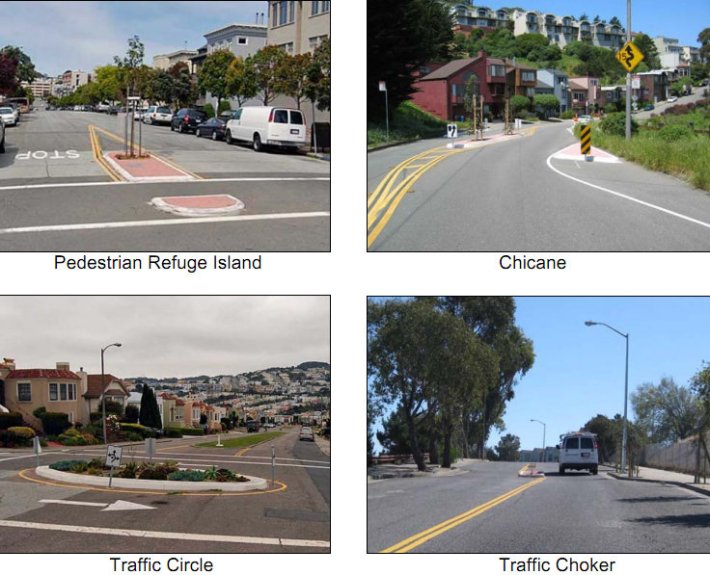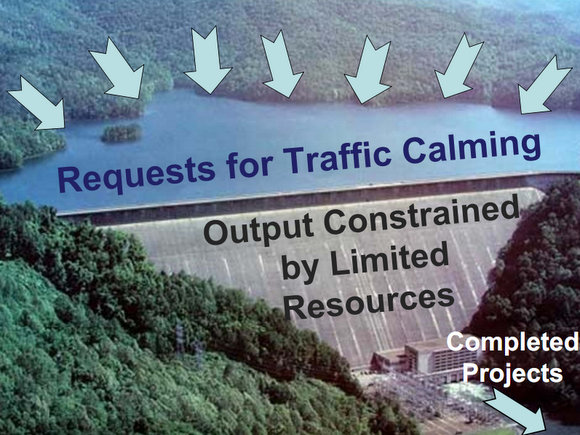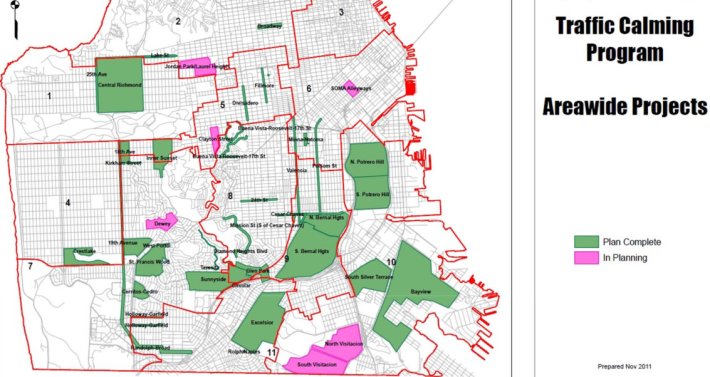The demand for projects to calm motor traffic and improve safety on San Francisco streets is far greater than the SFMTA can currently handle.
The agency says its Traffic Calming program lacks the staff and funding needed to address the overwhelming number of neighborhood requests for safer streets. As a result, many residents are left waiting a decade or longer for improvements that are proven to save lives and prevent injuries.
"We feel like there's been such a latent demand -- or current demand, even -- for traffic calming that, given various limited resources, these requests are piling up," SFMTA Livable Streets Senior Engineer Mike Sallaberry told the SF County Transportation Authority (SFCTA) Plans and Programs Committee last week, which approved funding for program staff to revise its five-year project prioritization plan.
According to Sallaberry's presentation [PDF], the SFMTA receives an average of six to eight applications for traffic calming improvements every month, adding up to more than 500 since the agency began accepting them in 2001. By the time the SFMTA started implementing projects in 2005, staff already had over 135 approved applications in the pipeline.
The SFMTA has put its application process on hold until later this year as it determines which projects to prioritize over the next five years. The backlog of projects for that time frame would require an estimated $64.7 million to implement, $27 million of which have been planned (or are being planned). But only $12.4 million will be available to build out the projects, according to projections presented [PDF] to the SFMTA Board of Directors this week by Chief Financial Officer Sonali Bose. The funding comes from various grants and the city's Prop K sales tax revenue, which is allocated by the SFCTA to transportation projects citywide.
Sallaberry explained that traffic calming requests are prioritized according to the severity of the safety problem in a given area, based on factors like the number of crashes.
"If your area is not the worst in the city, we have to deal with the most severe problems first," he said.
For each application, the wait to reach the top of the list could take one year, or it could take over five years, Sallaberry said. At that point, staff begins a six- to 18-month community planning process, followed by a planning and implementation phase that takes at least two years -- or more than five, depending on the project's size.
"Traffic calming evokes strong emotions in people, so we want to make sure our process is as thorough as possible, albeit reasonable timeline-wise," said Sallaberry.
But as local streets take a back seat to more dangerous high-speed arterials, where pedestrian crashes are most likely to occur, District 2 Supervisor and SFCTA committee member Mark Farrell said he was concerned about seeming unresponsive to constituents who might bemoan the lengthy timeline for local street improvements.
"I don't want to be faced with an instance where, 'Hey, there are cars buzzing down the street, my kid almost got run over, it happens every week,' and -- 'Hey, there's nothing we can do about it,'" said Farrell.
Sallaberry assured the supervisor that traffic calming on local streets would still ultimately be addressed, though he reiterated that improving arterial streets delivers the most "bang for our buck."







